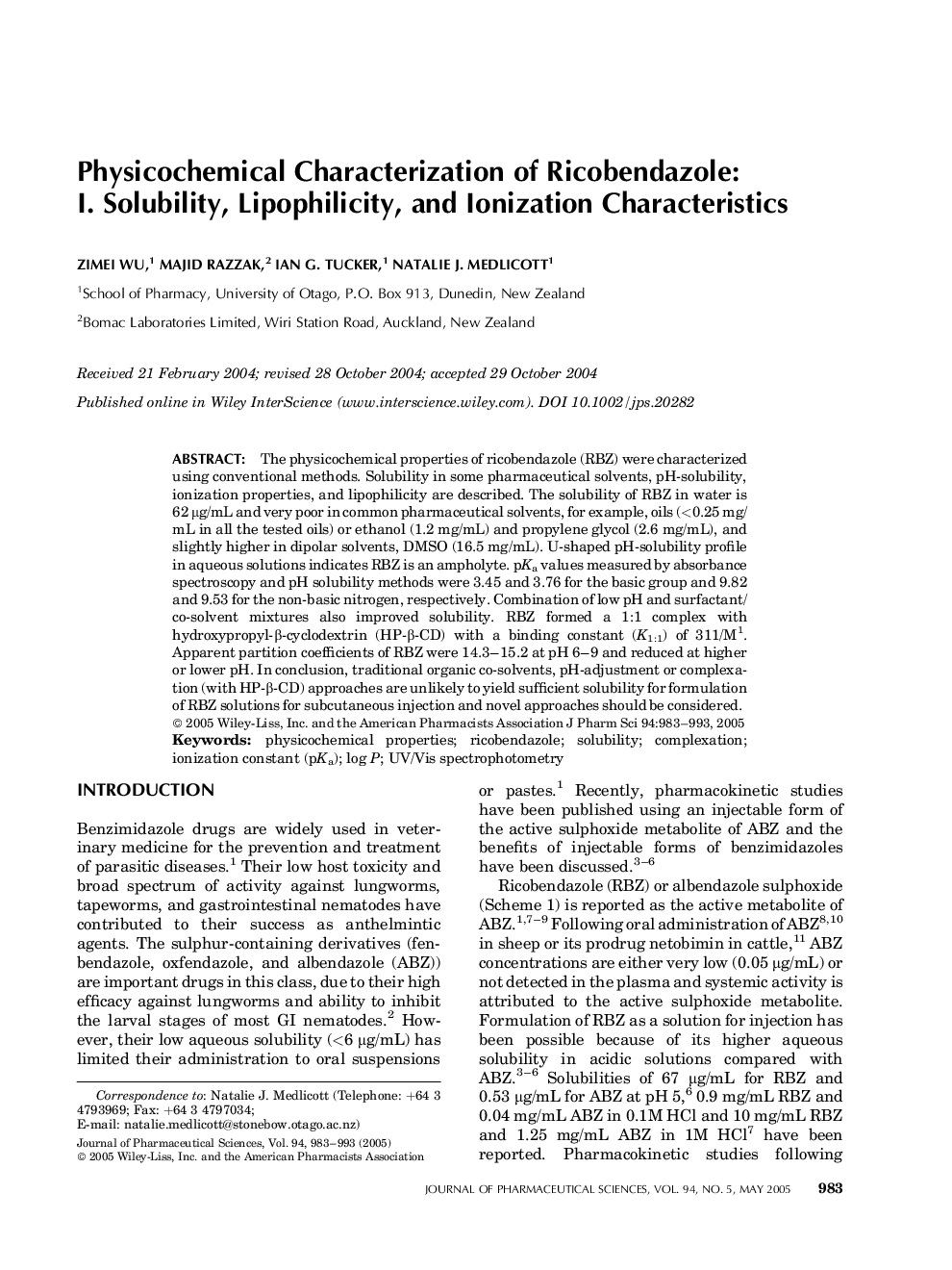| Article ID | Journal | Published Year | Pages | File Type |
|---|---|---|---|---|
| 8994923 | Journal of Pharmaceutical Sciences | 2005 | 11 Pages |
Abstract
The physicochemical properties of ricobendazole (RBZ) were characterized using conventional methods. Solubility in some pharmaceutical solvents, pH-solubility, ionization properties, and lipophilicity are described. The solubility of RBZ in water is 62 μg/mL and very poor in common pharmaceutical solvents, for example, oils (<0.25 mg/mL in all the tested oils) or ethanol (1.2 mg/mL) and propylene glycol (2.6 mg/mL), and slightly higher in dipolar solvents, DMSO (16.5 mg/mL). U-shaped pH-solubility profile in aqueous solutions indicates RBZ is an ampholyte. pKa values measured by absorbance spectroscopy and pH solubility methods were 3.45 and 3.76 for the basic group and 9.82 and 9.53 for the non-basic nitrogen, respectively. Combination of low pH and surfactant/co-solvent mixtures also improved solubility. RBZ formed a 1:1 complex with hydroxypropyl-β-cyclodextrin (HP-β-CD) with a binding constant (K1:1) of 311/M1. Apparent partition coefficients of RBZ were 14.3-15.2 at pH 6-9 and reduced at higher or lower pH. In conclusion, traditional organic co-solvents, pH-adjustment or complexation (with HP-β-CD) approaches are unlikely to yield sufficient solubility for formulation of RBZ solutions for subcutaneous injection and novel approaches should be considered. © 2005 Wiley-Liss, Inc. and the American Pharmacists Association
Related Topics
Health Sciences
Pharmacology, Toxicology and Pharmaceutical Science
Drug Discovery
Authors
Zimei Wu, Majid Razzak, Ian G. Tucker, Natalie J. Medlicott,
